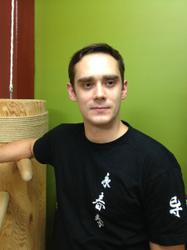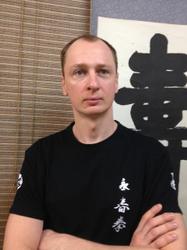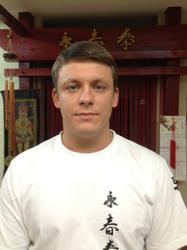Master Te Kong: Red Junk Opera, two brothers
Red Junk Opera
 (in the photo: Do Tuan, Chan Van Fung, Chin Kuok Din, Mai An Chau).
(in the photo: Do Tuan, Chan Van Fung, Chin Kuok Din, Mai An Chau).
Many years ago a popular troop of actors performed the Red Junk Opera in Foshan City. They toured between Zhaoqing and Guangzhou. Once Leung Bok Cho visited a performance and understood that he could never find better students! Actors had great acrobatic and martial skills, and their profession required a knowledge and psychic development to warm’ to the characters they were depicting. Having become friends with the actors, Bok Cho found out that they practiced Gun-Fu in the Ven Chun Kuen style (Fist of Eternal Spring). Ven Chun Quen is written differently from its first hieroglyph form but almost sounds the same. They were taught this style by Chzhi Shim, a monk from the Foshan Shaolin Temple.
Chzhi Shim’s Eternal Spring’ consisted of fist techniques, pairs work (similar to Chi Sao in Wing Chun or Tui Shou in Tai Chi), as well as work with 3 metre poles and pairs short swords’ techniques. Having satisfied themselves on Bok Cho’s mastership and the wisdom of his style, the actors became his students. The gifted teacher Leung Bok Cho spent several years in the Opera. During that time, staff and actors learned all the secrets of his style.
The Ven Chun Quen style of Chzhi Shim wasn’t forgotten and was practiced in parallel with the pole and butterfly swords’ techniques which became the nature of Vin Chun Quen. The fusion of related Shaolin systems occurred. Among the most distinctive of Leung Bok Cho’s students were Vong Va Bo, Dai Fa Min’ Kam, Leung Yi Tai and Go Lo Chung. Vong Va Bo (Huan Huabao) came from the Gulao region. Being a massive and strong fighter he was highly respected by his friends. He performed dramatic roles in the opera, requiring tough will and an excellent training in martial arts (Vong Va Bo played the martial commander Mo Sang). Vong Va Bo was a virtuoso in the use of the long pole. Having reached an old age he settled in Foshan city where he began teaching Wing Chun Quen to wealthy citizens. Among his students was his fellow countryman, doctor and pharmacist, Leung Chzhan as well as a policeman called Fok Bo Chuen.
Kam Painted Face’ (Da Hua Mia Tszin), who mostly performed clowns roles, differed in his amazing dexterity and agility. He was a great acrobat and juggler. Having retired from the Opera, he settled in Foshan City and opened a Vin Chun Quen class. While at the Opera, he taught the young Fung Siu Ching. Later in Foshan City he taught Fok Bo Chuen (who studied at different times under two different Vin Chun Quen Masters).
Fok Bo Chuen worked for the Foshan City police during the period of the late Qing Dynasty. He became famous for his courage as well as his amazing depth of mastership and knowledge of martial arts. For his virtuoso weapons skills he was called Double knife’ Fok.
Fung Siu Ching from the Shunde region was also a policeman. In his younger years, working as a tailor’s apprentice, he met Dai Fa Min’ Kam, one of the actors in the Red Junk Opera. Having become his student for several years he toured with the troop. Taking into account Fung Ciu Ching’s brilliant reputation, a Sichuan province governor asked him to become his main bodyguard. No opponents have ever defeated Siu Ching. There were legends circulating that he was a really powerful warrior and a brilliant weapon fighter (spear, pole, swords, javelin, etc.). Even when he was a young man, Fung Siu Ching already had his first students. He taught Ven Chun Kuen and Siu Lam Ven Chun. Many of his students became professional guards and moved abroad. His style spread to Indonesia, Malaysia and Singapore. Among the Vin Chun Masters, Fung Siu Ching was one of the most unique specialists of his time.
Two brothers.
At the end of the 19th Century a rich Foshan fireworks-merchant called Yuen Chzhong Min, having spotted the great interest his children showed in martial arts, decided to provide them with a decent education in this area. He found the policeman Fok Bo Chuen and invited him to live and teach in Yuen’s own family estate, named Mulberry Garden’.
Vin Chun Quen classes taught by a Master are very expensive. But Yuen Chzhong Min was quite wealthy and loved his children. He paid a lot for his sons’ education (Gun Fu as well as legal studies).
Fok Bo Chuen trained the Yuen family, paying special attention to Chzho Min’s two sons: Chai Van and Kai San.
Yuen Chai Van (1877-1961) was the fourth child in the family. Yuen Kai San (born in 1889) was the fifth. Fok Bo Chuen taught the brothers for many years. The teacher taught them fist fighting, fundamental Vin Chun Quen exercises, wooden dummy exercises, pole and butterfly knives techniques, biu’ (byao) javelins throwing and fire arms shooting (revolver and rifle). The teaching began from limbs training (a palm in the iron sand’). During this special exercise (based on special methods with the use of herbal and mineral substances) strikes are made by various parts of the hand on sacks filled with rice, sand, pebbles and iron chips. After their studies the brothers developed amazing hand power. They could break through a sack of rice with their fingers as well as bending coins.
Having finished working with the Yuen family, Fok Bo Chuen retired to a monastery where he lived until the end of his life. Yuen Chai Van continued his classes, always visiting his teacher in the temple.
Later, a new teacher called Fung Siu Ching, arrived to the Yuen household. The Master Ching’s Vin Chun Quen version was a fighting system combining Wing Chun’s close combat and Tsin Na art. The latter is taught to divert the opponent’s attention and helps develop sensitivity in applying power. The brothers were actually highly accomplished masters at this stage. That is why the teacher, Ching, concentrated his attention on the quality side of exercises, which they were already familiar with. During a relatively short time the brothers’ skills were raised to a very high level. Ching taught them close quarter fighting, the art of seizure and capture as well as freeing oneself, improved their wooden dummy techniques and use of weapons.
 Fung Siu Ching began work in the Yuen family when he was 70 years old. Like the previous teacher, he lived and taught until the end of his days in the Mulberry Garden’ estate. He died at the age of 73 years old. Fung Siu Ching was buried at the Yuen family cemetery.
Fung Siu Ching began work in the Yuen family when he was 70 years old. Like the previous teacher, he lived and taught until the end of his days in the Mulberry Garden’ estate. He died at the age of 73 years old. Fung Siu Ching was buried at the Yuen family cemetery.
Wing Chun historians of Yuen Kai San’s life say very little about Kai San’s older brother, Yuen Chai Van. All that we read about is the fact that the brothers studied Vin Chun together and that Yuen Chai Van later immigrated to Vietnam. Yuen Chai Van was around 12 years older then Kai San and if they began their study in 1900, then Chai Van was 23 and Kai San 12 years old. Here we can come to the conclusion that the first years of study were in a different regime and with different requirements for either brother. Nearly straight away, on completing his study with Fung Siu Ching, Yuen Chai Van left home. Yuen Kai San remained in the family estate and continued to perfect his skills. It is known for certain that Yuen Kai San was one of the best Wing Chun Masters in Foshan. Currently the only teacher of Kai San is Shum Nun.
based on www.tekong.net



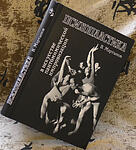

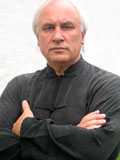 Коан – вопрос к членам Федерации Юн Чун Цюань от президента В.В. Мартынова: «Что Вы сделали для Федерации из того, что не мог бы сделать любой другой за деньги?»
Коан – вопрос к членам Федерации Юн Чун Цюань от президента В.В. Мартынова: «Что Вы сделали для Федерации из того, что не мог бы сделать любой другой за деньги?»
